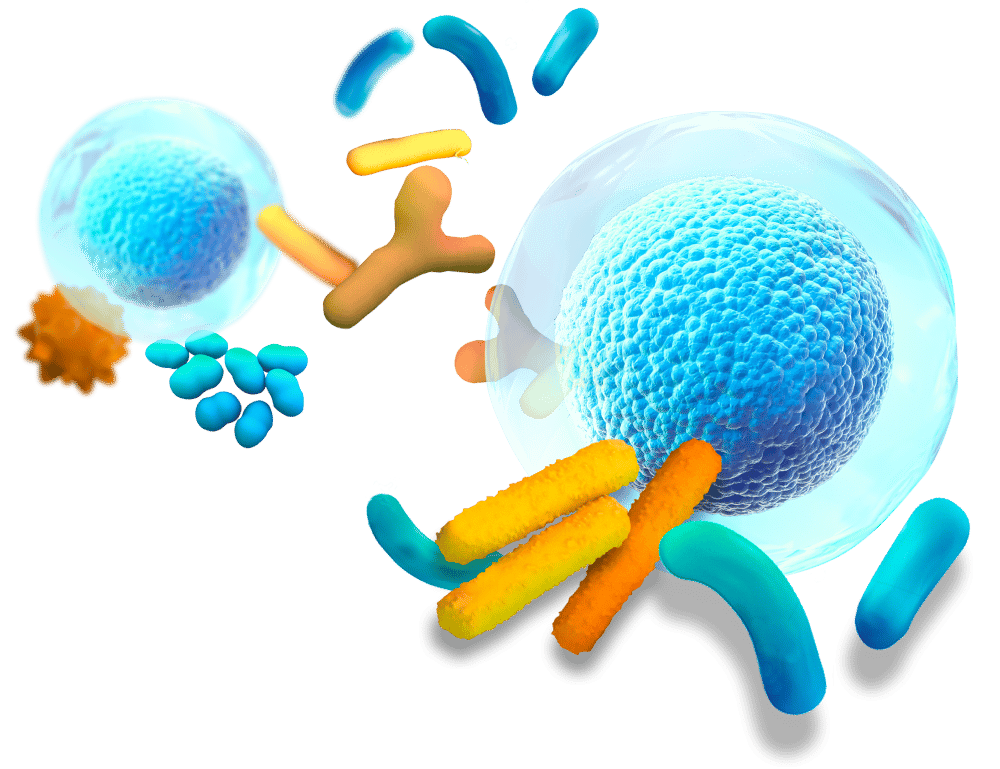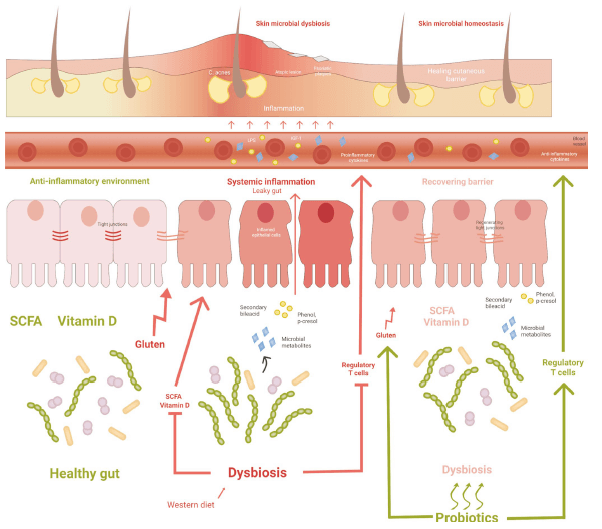
Innovative preclinical investigations for dermatologic disorders & diseases
Enterosys is a CRO scientifically rooted in the gut and gut-skin axis
The cutaneous epidermis constitutes a protective interface of the body of approximately 25 m2 and it is one of the largest epithelial surfaces in interaction with microbes. Our skin is regarded as the first line barrier against the external environment. Likewise, the gastrointestinal tract is the largest interface (30 m2) between the host and its environment.
Both the gut and the skin have a significant impact on human health and interact extensively with the microbiota itself, which is essential for the balance and homeostasis of the immune system.

Disorders & diseases interacting with the gut and gut-skin axiS
ACNE VULGARIS
Acne vulgaris consists in a chronic inflammatory disease of the pilosebaceous unit. Gut microbial dysbiosis has also been suggested to contribute to the inflammatory response seen in acne.
AGING
Aging causes the formation of reactive oxygen species in the skin, which is subsequently damaged and results in cell death. Changes to the gut microbiota provide a protective effect by modulating the immune response to oxidative stress.
ATOPIC DERMATITIS
Atopic dermatitis is a chronic inflammatory skin disease, characterized by immune dysregulation, skin barrier dysfunction, and microbial dysbiosis in both the skin and gut.
EMOTIONAL DISORDERS, STRESS AND DEPRESSION
Skin pathologies are thought to be related to mood and psychological disorders. The gut-brain-skin axis has been used to explain correlations between the gut microbiota, emotional states and systemic inflammation of the skin.
PSORIASIS
Psoriasis is an immune-mediated inflammatory skin disease. Alterations in both the skin and gut microbiota have been reported in patients with psoriasis.
ROSACEA
Rosacea is another inflammatory skin condition, which has been associated with alterations in the gut microbiome and increased prevalence of inflammatory bowel disease.
At the cutting edge of preclinical studies in dermatologic diseases
The gut-skin axis describes the relationship by which the gut can influence skin health due to its immunological and metabolic properties. The gut and skin barriers surprisingly share many characteristics and functionalities. In direct contact with the external environment, both organs are essential for the body’s immune response and neuroendocrine function. The gut-skin axis results from the similarity between these organs. The gut and skin also both share a high rate of cell turnover, which inhibits adhesion and infection by pathogens and makes both tissues highly responsive to stress and anxiety.

Figure from Szántó M, Dózsa A, Antal D, Szabó K, Kemény L, Bai P. Targeting the gut-skin axis-Probiotics as new tools for skin disorder management? Exp Dermatol. 2019 Nov;28(11):1210-1218. doi: 10.1111/exd.14016. Epub 2019 Aug 28. PMID: 31386766.

Discover our preclinical models
Enterosys offers you a complete and innovative range of preclinical protocols based on in vitro and in vivo efficacy tests.
Discover our approach
Our experience in R&D and our innovative management approach allow us to provide support in the design and development of new models in order to meet your objectives.
Gut & gut-organ communication: a major role in many disorders and diseases

GASTROINTESTINAL DISEASES

NEURODEGENERATIVE DISEASES

METABOLIC
DISEASES
Do you have a question about the contribution of gut models in your innovative research ?
Our team of experts will be delighted to answer all of your questions. We guide you in the design of an optimized protocol to meet your objectives and add value to your molecules with quick and concrete solutions.